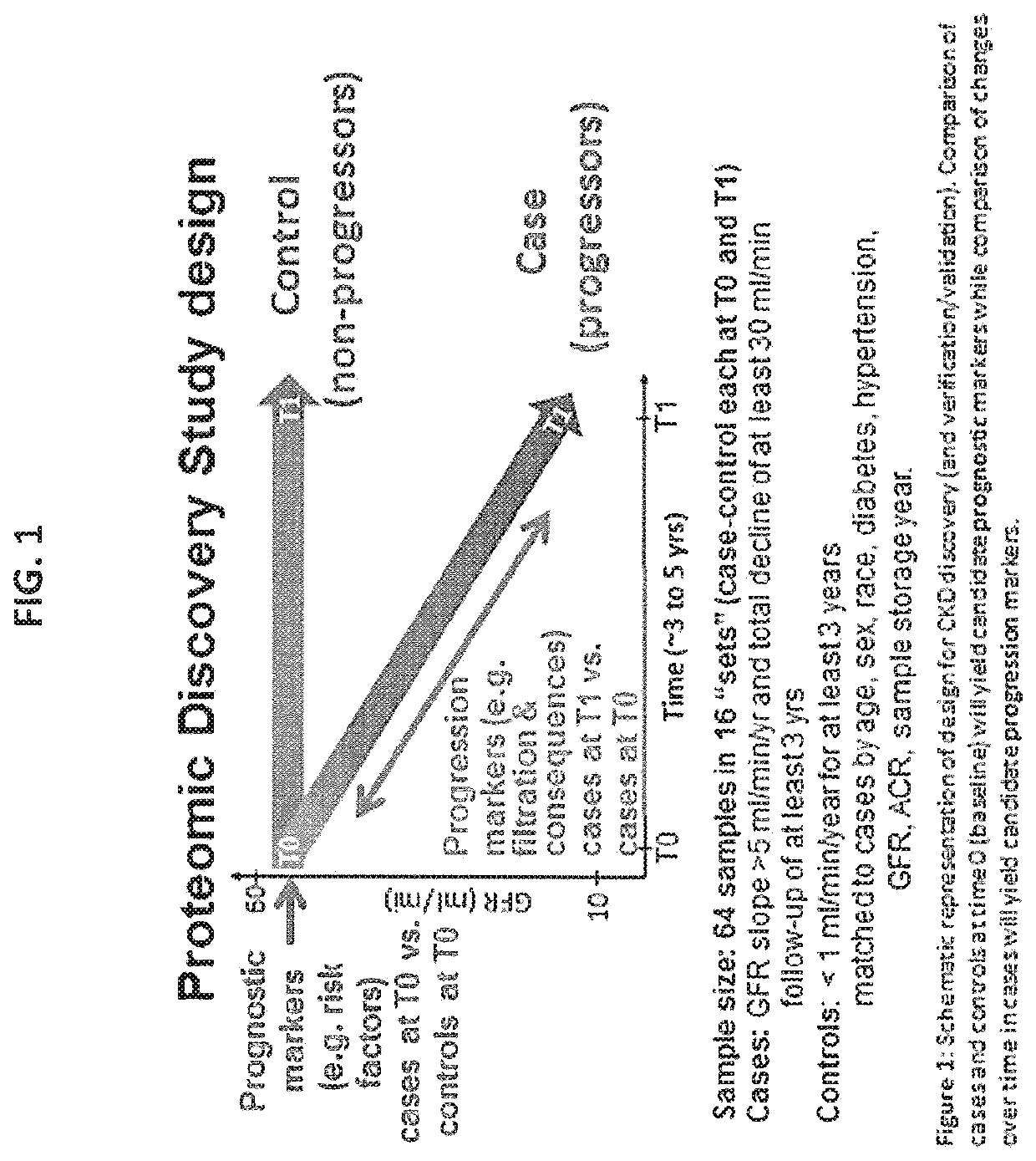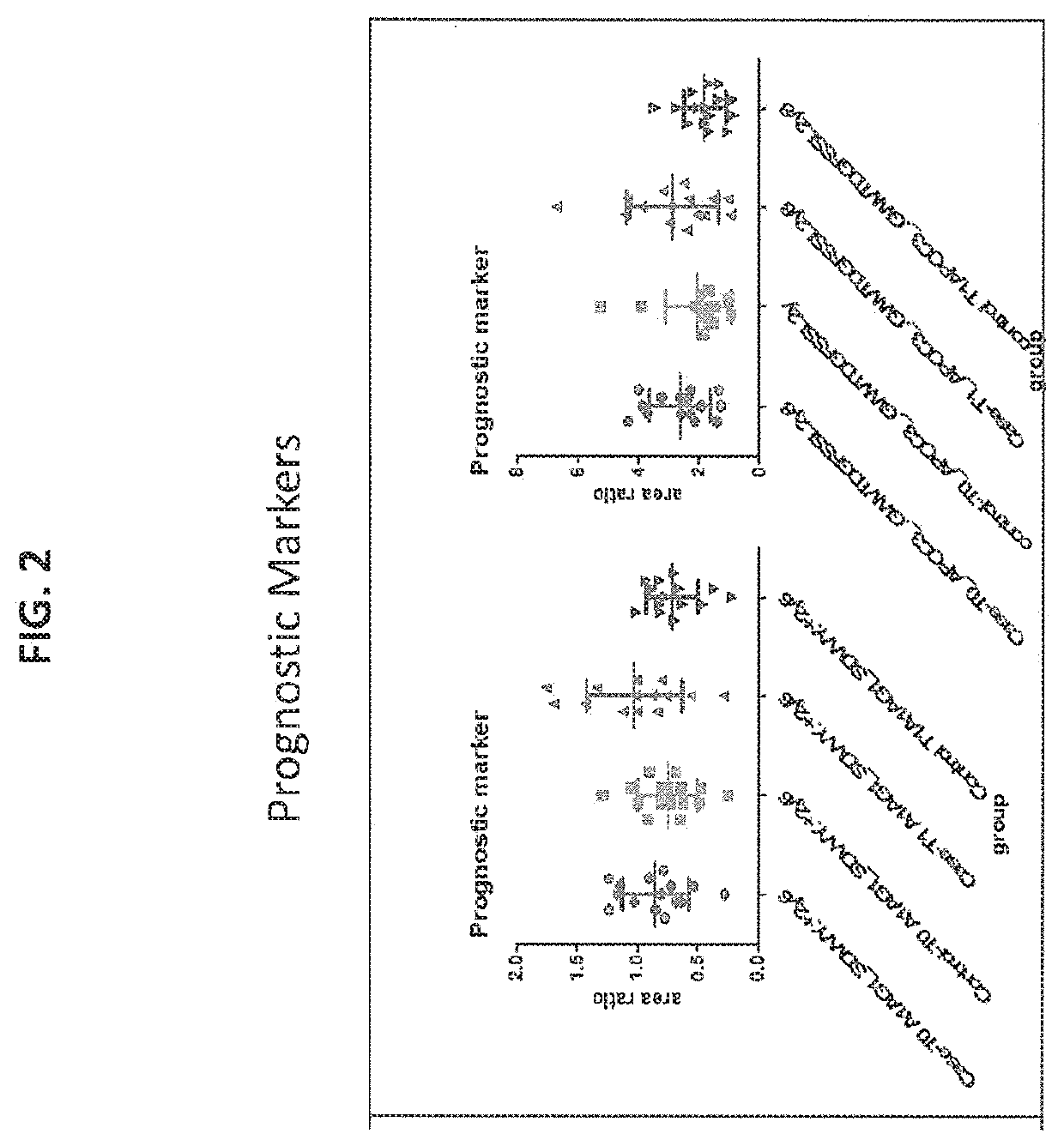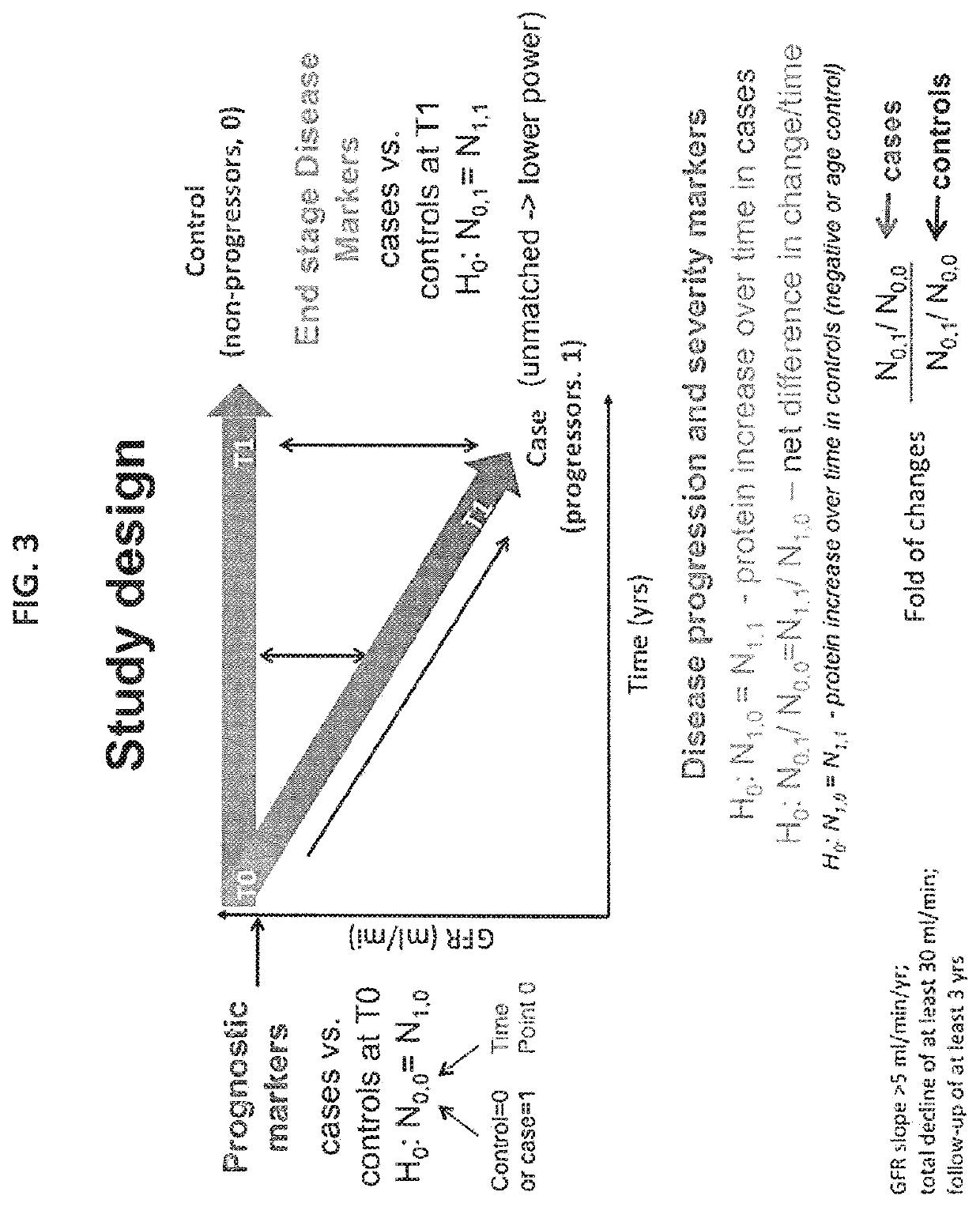Prognosis and progression biomarkers for chronic kidney disease
- Summary
- Abstract
- Description
- Claims
- Application Information
AI Technical Summary
Benefits of technology
Problems solved by technology
Method used
Image
Examples
example 1
[0266]Without being bound by theory, in-depth proteomics discovery is used to identify novel plasma biomarkers that are useful for the prognosis for development of chronic kidney disease (CKD) and to monitor progression (severity) of CKD. Furthermore, a subset of markers are related to key signaling pathways underlying the disease.
[0267]Methods. A four group design in which 64 plasma samples collected at two time points (T0 and T1) for 16 cases and 16 controls were analyzed. Cases were individuals with GFR slope>5 ml / min / year and a total decline of at least 30 ml / min / year follow-up of at least 3 years while the controls consisted of individuals with <1 ml / min / year for at least 3 years matched by age, sex, race, diabetes, hypertension, GFR (Glomerular Filtration Rate) at T0, ACR (Albumin-to-Creatine Ratio). Each sample was depleted of the top 14 abundant plasma proteins, fractionated using reversed phase HPLC, digested, analyzed by mass spectrometry and batched searched. Proteins wer...
example 2
[0270]Based on the results from the de novo proteomic discovery in blood from a Chronic Renal Insufficiency Cohort (CRIC) Study (see Example 1 herein), we 1) develop targeted assays, for example either multiple reaction monitoring (MRM) or ELISA, for the “top 20-30 hits” for chronic kidney disease (CKD) prognosis and progression protein biomarkers; and 2) verify and validate these “hits”. The most promising potential biomarkers (top hits) are internally validated with a case-control study in a separate sample of the CRIC Study
[0271]Background and Rationale. The most common serum biomarker is serum creatinine and its derivative, estimated GFR (Glomerular Filtration Rate). Estimated GFR is a strong predictor of CKD progression with recent meta-analyses showing consistency of association across a broad range of causes. However, improvements are needed to better discriminate between people who do versus who do not progress to kidney failure (prognostic markers) to provide risk predictor...
example 3
[0287]Verification and Validation. Identified Candidate Markers. Data was collected from a retrospective matched case-control study of kidney disease; 16 pairs of case / controls subjects are considered. All subjects had chronic kidney disease (CKD) at baseline. A case subject is defined as a subject who progressed substantially, while a control subject is one who has not. Progression was defined as individuals meeting 3 criteria: slope>5 ml / min / 1.73 m2 per year; total decline of at least 30 ml / min / 1.73 m2; follow-up of at least 3 years. As such cases progressed from early CKD Stage 3 (eGFR>45) to late CKD Stage 4-5 (eGFR<30). Blood samples were assayed from two different time points (baseline and end of follow-up) to uncover proteins that predict rapid progression as well as consequences of progressive CKD. See FIG. 1 for study design.
[0288]Among the assayed samples, 1551 protein groups were measured. Selection criteria for candidate markers appropriate for further verification and v...
PUM
 Login to View More
Login to View More Abstract
Description
Claims
Application Information
 Login to View More
Login to View More - R&D Engineer
- R&D Manager
- IP Professional
- Industry Leading Data Capabilities
- Powerful AI technology
- Patent DNA Extraction
Browse by: Latest US Patents, China's latest patents, Technical Efficacy Thesaurus, Application Domain, Technology Topic, Popular Technical Reports.
© 2024 PatSnap. All rights reserved.Legal|Privacy policy|Modern Slavery Act Transparency Statement|Sitemap|About US| Contact US: help@patsnap.com










